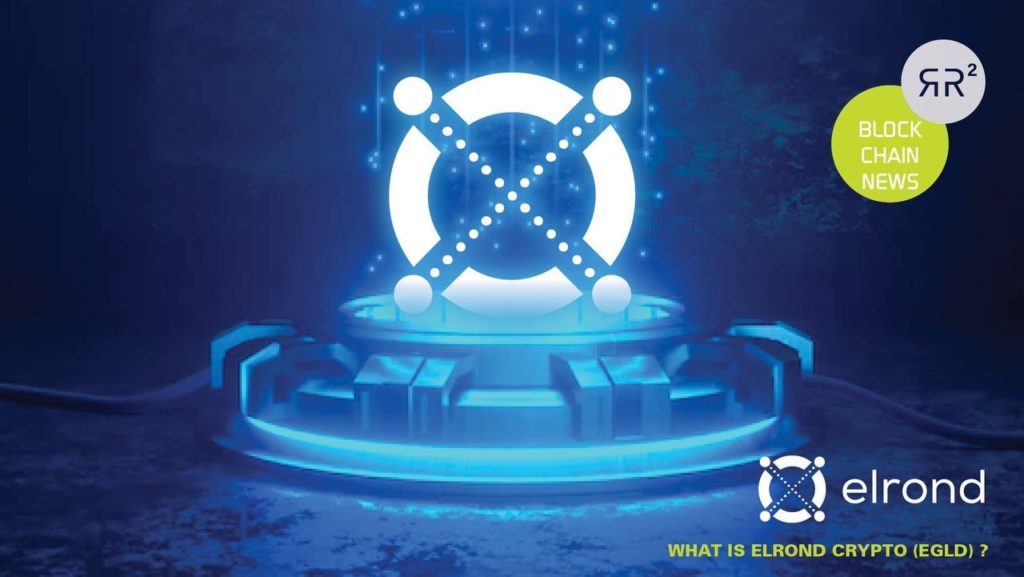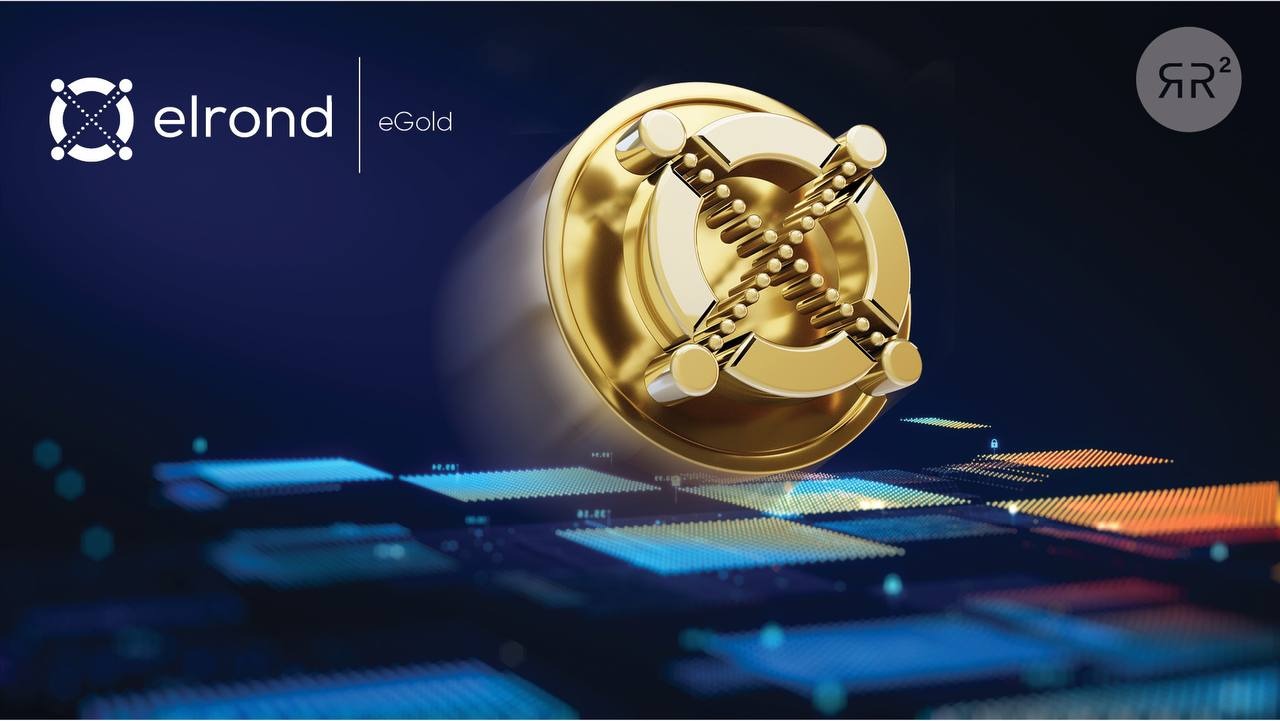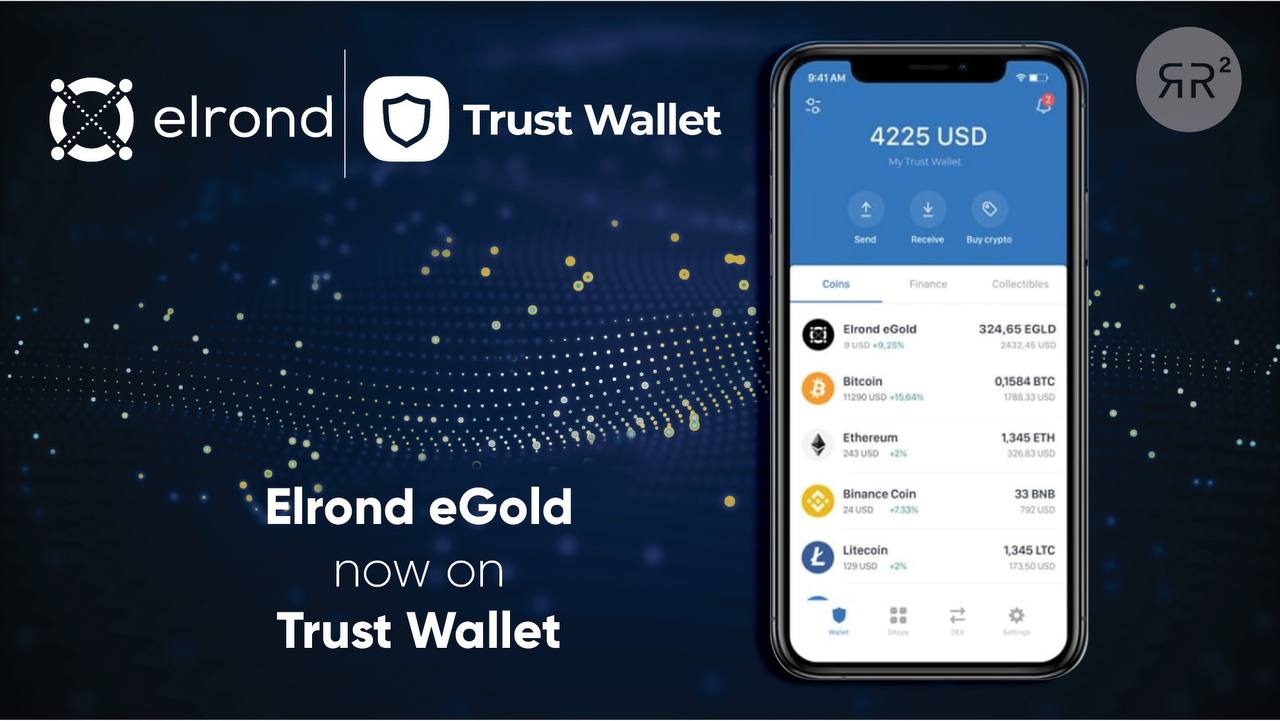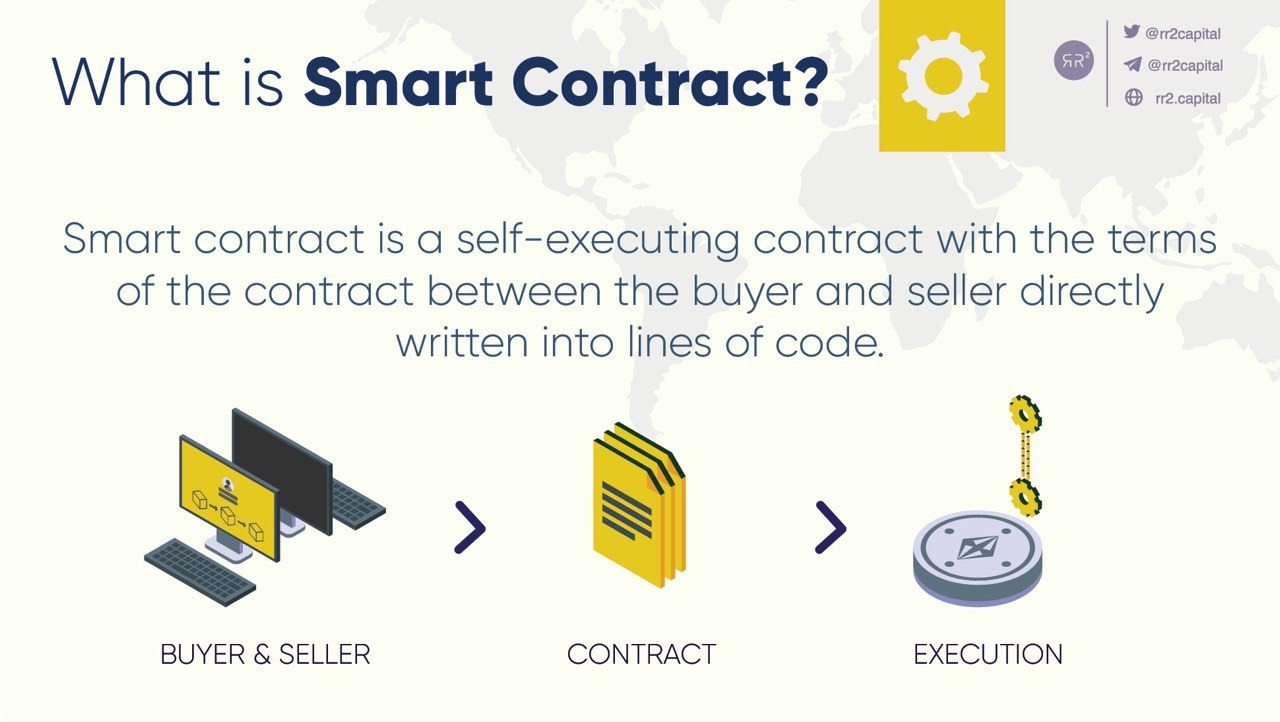Elrond – recently rebranded as MultiversX – is a blockchain network that aims to provide a solution to one of the biggest issues of decentralized networks: scalability. They call this the internet scale blockchain. Once you can offer a network that is secure, cheap to use and does not get congested even while handling a large number of transactions, you have a shot at creating a new internet economy.
Elrond’s technology allows users to build and use decentralised apps (programs that run on a network rather than on a single computer) and digital currencies. If we want mass adaption of this revolutionary technology, blockchain scalability and efficiency are key.
The Elrond team has found a way to solve this issue by introducing the combination of Secure Proof of Stake and Adaptive State Sharding that provides high-throughput transactions with low latency and low transaction fees. The network rewards participants whose computational power supports the system of smart contracts.
In addition to offering fast transactions and a scalable environment for developers, enterprises, and users, the Elrond blockchain also provides a user-friendly experience – something that is sorely missing from many crypto solutions currently.
Team
Elrond is a blockchain project founded by Beniamin Mincu, Lucian Todea, and Lucian Mincu.
Benjamin Mincu is the CEO of the project and has a background in software engineering and entrepreneurship. Todea is the COO and has experience in distributed systems, cryptography, and blockchain. Lucian Mincu is the CIO and has a background in machine learning and natural language processing.
In addition to the founders, the Elrond crypto team includes several advisors and investors, including Alex Tabarrok (professor of economics), Raul Jordan (Ethereum core developer), and Alex Iskold (Managing Director at Techstars NYC). The project has also received funding from investors such as Binance Labs and NGC Ventures.
eGold (EGLD) coin
The Elrond ecosystem is powered by its native cryptocurrency, eGold (EGLD). EGLD is a multi-purpose cryptocurrency that can be used for staking, voting, and conducting transactions on the network. It is also a central asset in the incentivization system that rewards network participants for their contributions to the network.
Staking is a process in which users can earn rewards by holding EGLD tokens in a wallet and participating in the consensus mechanism of the Elrond network. By staking their tokens, users can help to secure the network and earn a share of the rewards that are distributed to stakers.
EGLD can also be used for voting on the Elrond network. Token owners can use their EGLD coins to vote on proposals and decisions that affect the direction of the network.
In addition to staking and voting, EGLD can also be used as a medium of exchange on the Elrond blockchain network. Users can use EGLD to buy and sell goods and services or to send and receive payments.
Finally, EGLD is used to incentivise the participation of validators, who help to secure the entire network and to reward developers who create and maintain decentralised applications on the platform.
Elrond Crypto Wallets
Here are some of the crypto wallets that currently support EGLD:
- Elrond Wallet: This is the official wallet of the Elrond network, and it is available for both desktop and mobile devices. The Elrond Wallet supports EGLD, as well as other assets that are built on the Elrond platform.
- Ledger Nano: The Ledger Nano is a cold or hardware wallet that supports a wide range of cryptocurrencies, including EGLD. The Ledger Nano offers a high level of security, as it stores your private keys offline and allows you to sign transactions using a secure element.
- Trust Wallet: Trust Wallet is a mobile wallet that supports EGLD and a wide range of other cryptocurrencies. It is available for both iOS and Android devices and offers a user-friendly interface and a number of useful features, such as support for decentralized exchanges and staking.
- Maiar: Maiar is a lightweight version of the Elrond wallet, focused on simplified use. It aims to onboard non-crypto native users by enabling social payments and an easy way to send money digitally.
How does Elrond work?
The way the Elrond blockchain works is based on three pillars which together act as the unique foundation of the project. Elrond describes these as Secure Proof of Stake, adaptive state sharding and smart contracts.
Secure Proof of Stake (SPoS)
Elrond uses a protocol called secure proof of stake (SPoS) to process transactions and reach consensus on the state of the blockchain network.
SPoS is a variant of the proof of stake (PoS) consensus mechanism, which allows users to validate transactions and participate in the consensus process by staking their tokens.
In the Elrond network, users who hold EGLD tokens can choose to stake their tokens and become validators. Validator nodes are responsible for processing transactions and reaching consensus on the state of the network. They do this by proposing and voting on blocks of transactions, which are then added to the blockchain once they have been approved by a majority of the validators.
Validators are selected to propose and vote on blocks based on the amount of EGLD tokens that they have staked. The more EGLD tokens a validator has staked, the higher their chances of being selected to propose and vote on blocks. Validators who contribute to the security and stability of the network are rewarded with a share of the transaction fees and block rewards that are generated on the network.
Network sharding
Blockchain sharding is a revolutionary approach for boosting blockchain scalability without sacrificing data security. It allows the network to be divided into smaller, more efficient pieces, which can process transactions in parallel and handle high levels of activity.
On Elrond, adaptive state sharding is used to improve performance by allowing it to process more transactions per second. The Elrond network is divided into multiple shards, each of which is responsible for processing a portion of the network’s transactions. This transaction sharding allows the system to scale horizontally, meaning that it can add more processing power as needed to handle increases in activity.
Smart contracts
Smart contracts allow for the automation of processes and the facilitation, execution, and enforcement of the terms of a contract. They reduce the risk of fraud and reduce the need for intermediaries.
Elrond smart contracts are used to create decentralised applications (dApps) and assets. Developers can use smart contracts to define the rules and logic of their dApps and to specify the conditions under which certain actions will be taken. For example, a smart contract could be used to create a decentralised exchange in which users can buy and sell assets using EGLD token pairs.
Smart contracts on Elrond are written in the eWASM (WebAssembly) programming language, which allows for the creation of highly efficient and secure contracts. eWASM is a high-level programming language that is designed to be easy to use and optimise for execution on the web. It allows Elrond developers to deploy smart contracts that are fast, secure, and easy to maintain.
In addition to eWASM, Elrond also supports the use of the Rust programming language for writing smart contracts. Rust is a systems programming language that is designed to be fast, safe, and concurrent, making it well-suited for use in the creation of smart contracts.
What gives Elrond value?
Several factors contribute to the value of Elrond and its native token, eGold (EGLD). EGLD has multiple uses, including staking, voting, and conducting transactions. This gives EGLD value as a means of participation, governance, and value transfer.
As more people use the Elrond network and adopt EGLD, the demand for the token can increase, which can drive up its value. This can be influenced by a variety of factors, such as the adoption rate of decentralised applications built on the Elrond platform, the success of the Elrond network as a whole, and overall market conditions.
Finally, the security and stability of the Elrond network can also contribute to the value of EGLD. A secure and stable network can attract more users and developers, which can increase the demand for EGLD and drive up its value.
How to buy and sell EGLD?
The easiest option is to buy or sell EGLD on a cryptocurrency exchange. Several exchanges offer EGLD trading, including Binance, Bitfinex, and Huobi Global.
To buy or sell EGLD on an exchange, you will need to create an account on the exchange and complete the necessary verification processes. Once your account is set up, you can deposit funds into your account using a bank transfer or a cryptocurrency. You can then use your funds to buy Elrond using the exchange’s trading platform.
Future plans
As part of the ambitious future plans, Elrond is in the process of rebranding and integrating all its systems under the MultiversX name. Recognising that the future includes people spending more and more time in Metaverses, the team is working on providing the infrastructure to run these enormous blockchain networks, hence the name MultiversX.
One of Elrond’s main goals is to build a decentralised internet economy that is powered by blockchain technology. To achieve this, Elrond is focused on building a scalable, fast, and secure blockchain platform that is capable of handling high levels of activity and supporting a wide range of decentralised applications.
The Elrond team is also focused on expanding the reach and adoption of Elrond, both within the cryptocurrency community and beyond. This includes partnerships with other organisations and companies, as well as efforts to educate and raise awareness about the benefits of decentralized technologies.
About RR² Capital
For more information about RR² Capital and our expansive disruptive technology-focussed investment portfolio, visit our website here or send us a mail here.





